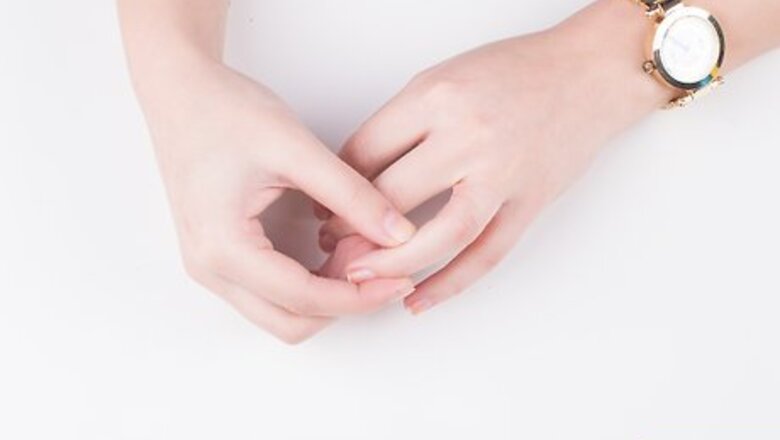
views
X
Trustworthy Source
PubMed Central
Journal archive from the U.S. National Institutes of Health
Go to source
Buddy taping is commonly practiced by healthcare professionals such as sports physicians, physical therapists, chiropractors and athletic trainers, but it can easily be accomplished at home by non-professionals too. If the buddy taping is done properly, it provides support, protection and helps to realign injured joints.
Buddy Taping Injured Fingers
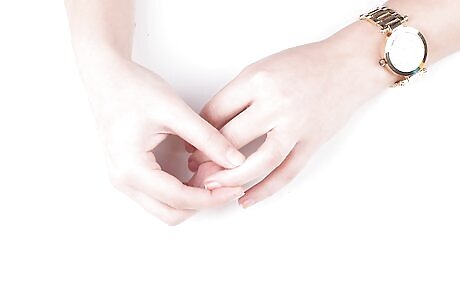
Identify the injured finger. Fingers are very susceptible to injury and even breaking when exposed to blunt trauma, such as getting them caught in doors or jammed while playing contact sports. In most cases, it's obvious which finger is injured (the one that hurts the most), but sometimes you need to examine your hand and fingers closely to better understand the injury. Signs of mild-to-moderate musculoskeletal injuries include redness, swelling, inflammation, localized pain, bruising, reduced motion, and maybe some degree of crookedness if your finger is dislocated or fractured. Buddy taping can be used on most finger injuries, even some stress (hairline) fractures, although more serious displaced fractures usually need splinting, casting, or surgery. Small stress fractures, bone chips, contusions (bruises), and joint sprains are not considered serious issues, but severely crushed fingers (mangled and bleeding) or displaced compound fractures (bleeding with bone sticking out of the skin) require immediate medical care, especially if the thumb is involved.
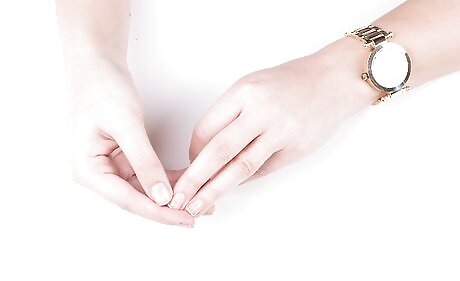
Decide which fingers to tape together. Once you've established which finger is injured, you need to decide which adjacent finger to buddy tape it to. In general, try to tape fingers together that are closest in length. The index finger and second finger are usually paired for buddy taping and fingers three and four are usually best taped together. Your thumb, due to its location and range of motion, can't be buddy taped to the index finger, so it's often splinted or casted when severely sprained or broken. In addition, make sure the "buddy" finger is uninjured, because taping two injured fingers together may create more problems. If your third finger (ring finger) is injured, you have the option of buddy taping it to the second or fourth finger. Choose the finger most equal in length, but for the most stability, the ring finger should be buddy-taped to the middle finger.
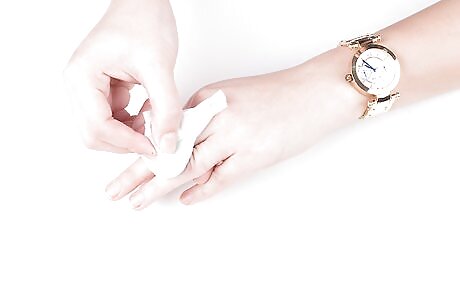
Prepare your fingers for taping. Once you've decided on which two fingers to buddy tape together, prepare your finger for taping. Start by washing your hands with soap and water, and then specifically clean the fingers to be taped with alcohol wipes. The alcohol in the wipes (isopropyl alcohol) is not only a good antiseptic, but it also gets rid of any oily or greasy residues that might prevent the tape from sticking to your skin. Use a hypoallergenic or low-irritant wrap underneath the tape if you have especially sensitive skin. If alcohol wipes are not available, the next best alternative is simple soap and water.

Tape your fingers together. Once you've cleaned and prepared the fingers, take some non-stretch medical, surgical, or athletic tape (about an inch wide) and tape your injured finger to the uninjured one — perhaps using a figure-eight pattern for more stability. Be careful not to bind the fingers too tightly together, because you might create additional swelling and may even cut off the circulation, causing tissue death (necrosis). The taping should be secure enough that both of your fingers move together. Check that there is no numbness, throbbing, color change, or loss of sensation in either finger after the taping. Be cautious buddy taping fingers together if you have diabetes, circulation problems, or peripheral arterial disease, because any significant reduction in blood circulation (from taping too tight) increases the risk of necrosis. Consider placing a thin strip of padding foam or cotton gauze between the fingers for comfort, protection and prevention of skin abrasions and/or blisters. Keep in mind that your risk of bacterial infection significantly increases with blistering and abrasions on the surface of the skin. Materials used for binding fingers include non-stretch medical/surgical paper tape, self-adherent wrap, electrical tape, small Velcro wraps and rubber bandages. To provide more support (beneficial for dislocated fingers) use a wooden or metal splint along with the tape. Popsicle sticks also work pretty well, just make sure there are no sharp edges that can dig into your skin.
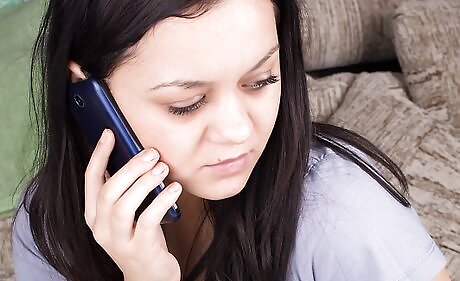
Follow up with a doctor for an evaluation. If an injury is serious enough to warrant taping, it is serious enough to be evaluated. Once your finger is stabilized, you should see a health care provider for a more comprehensive examination. You will likely need an X-ray to make sure you do not have a severe fracture or other damage. Use the buddy taping method in a pinch until you can seek medical care, but don't use it as a substitute for seeking medical attention. If you are in pain, you can take an over-the-counter pain reliever to help. Try acetaminophen (Tylenol) or ibuprofen (Advil, Motrin).
Avoiding Potential Complications
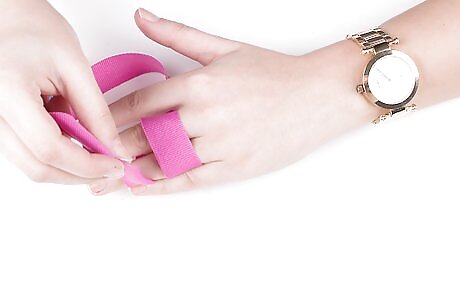
Change the tape regularly. If your fingers are initially taped by your doctor or another healthcare professional, then they likely used water-resistant tape so that it's safe to wash your hands and shower at least once. As a general guideline, however, be prepared to re-tape your fingers on a daily basis, particularly if you shower or wash your hands frequently. Wet or moist tape and dressings promote the growth of bacteria and mold, which gives off an unpleasant odor and increases the risk of a skin infection. Care should be taken when removing tape to avoid injury aggravation or skin damage. Use blunt-nosed scissors to cut the tape and then remove it slowly. If your injured finger hurts more after re-taping it, remove the tape and start over, but make sure it's a little looser. This is also a sign that you should seek medical advice. Your injured finger, depending on severity, may need to be buddy-taped for up to four weeks to properly heal, so you'll likely become very experienced at re-taping it.
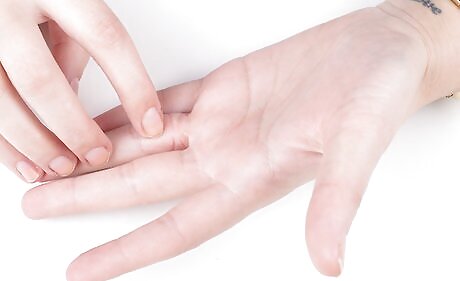
Check for signs of infection. This step is very important. Before reapplying the tape on a regular basis, check your fingers and the rest of your hand for any signs of skin irritation or infection. Abrasions, blisters and calluses increase the likelihood of a skin infection, so clean and dry your fingers thoroughly before re-taping them. Use soap and water to cleanse your hands. Signs of a localized skin infection include local swelling, redness, throbbing pain, and discharge of pus, which may emit an unpleasant odor. It's important to seek immediate medical attention if you suspect a skin infection.
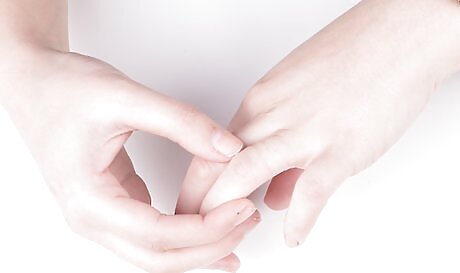
Be vigilant for signs of necrosis. As mentioned above, necrosis is a type of tissue death caused by a lack of blood and oxygen. An injured finger, particularly a dislocation or fracture, may already involve damaged blood vessels, so you have to be extra careful when buddy taping not to cut off circulation to the fingers. If you unintentionally do, then your fingers will likely start to throb with achy pain and turn dark red, then dark blue. Most tissue can survive without oxygen for a couple of hours (at most), but it's important to carefully observe your fingers within 30 minutes or so of taping to make sure they are getting enough blood. Diabetics often have less feeling in their hands (and feet) and tend to have poor circulation. Diabetics should avoid buddy taping and get evaluated by a doctor, as the risk of infection is significant. If necrosis does occur in the fingers, then bacterial infection can occur quickly. Untreated bacterial infections may turn gangrenous and may require amputation surgery so the infections won't spread. If you experienced an open compound finger fracture (bone protrudes through the skin), your doctor may recommend a two-week course of oral antibiotics to deter a bacterial infection.
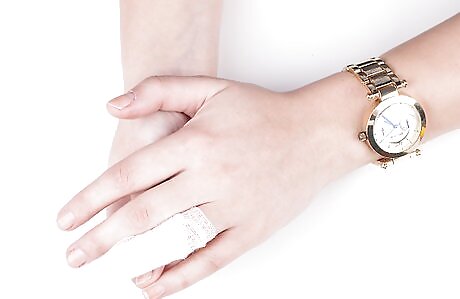
Don't tape a severely fractured finger. Although most finger injuries respond well to buddy taping, some are beyond its scope. For example, when fingers are crushed and completely shattered (termed a comminuted fracture) or fractured such that the bones radically misalign and stick out through the skin (termed an open compound fracture), then no amount of taping is helpful and it shouldn't even be considered. Instead, with serious and unstable fractures, you need to get to an emergency department quickly for more appropriate medical care (likely an invasive surgical procedure). On the other hand, small hairline (stress) fractures are stable and appropriate to tape until you can see a healthcare provider. Common symptoms of a severely broken finger include: intense sharp pain, swelling, stiffness, and usually immediate bruising due to internal bleeding. Likely your finger will look somewhat crooked and it will very difficult to make a fist or grab something heavy without severe pain. Broken fingers can be related to conditions that weaken bone, such as cancer (bone tumors), local infections, osteoporosis (brittle bones), or chronic diabetes.



















Comments
0 comment